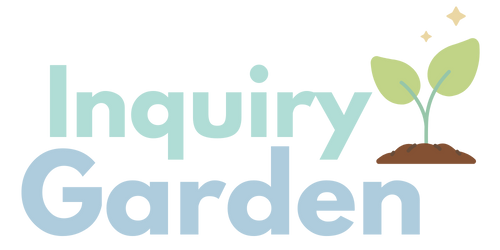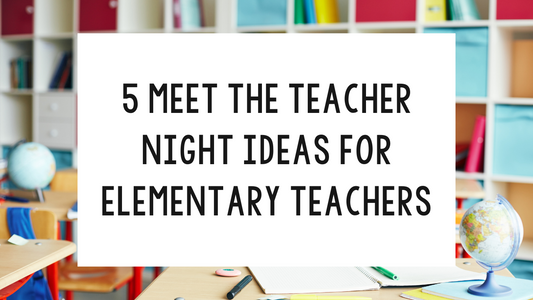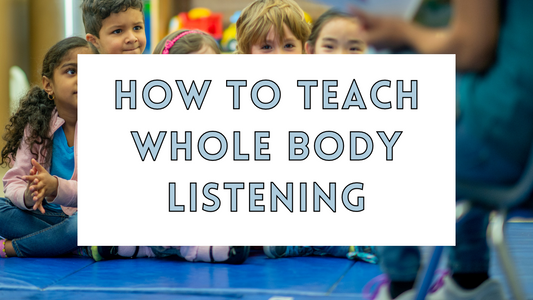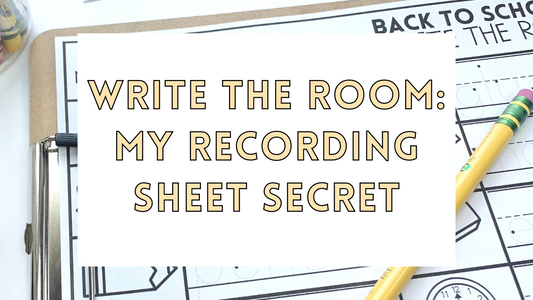Student ownership in the third teacher, or the classroom environment, is not accidental. Through intentional and strategic planning, we as teachers can create opportunities for students to put their touch on the space and truly feel belonging in the space. Put the printer to rest. Set your scissors down. No more endless printing, cutting and laminating before school. Let your kids create! Here are some of the simplest ways to invite your students to be the creators of the classroom.
Co-Constructed Hallway Displays
For students to feel ownership in the space, they not only need their thinking and writing displayed, but they also need to be a part of the decision making process. When figuring out what might be presented in the hallway, students should the first party consulted. If the room is truly theirs, they should have a say on the message that is being shared to the greater school. Before conference night, my Kinders knew we would have more traffic in the hallway. I told them that we were able to display something and asked them what we should display. The idea came up that we should tell people who we are and what we do. Students created strips answering that very question – who are we? We then created photo strings to show people what we do.

Student-Created Labels
I had a student last year beg to take the label she had made home near the last few weeks of school. I assured her that she would be able to take the label she made home, as all children would be. She reminded me several times until the last few days of school. Taking this creation home was incredibly important to this student and to many others. The labels they create serve an essential purpose in the classroom. The labels not only tell us where things go, they allow the classroom to function. Think, if we did not have a label to tell us where to put the paintbrushes, the painting process would be much more challenging and we potentially could not paint.
When starting this process I told students that we have a lot of tools in the room. I asked them what it was like when tools were organized. What does it feel like? What is it like to use tools that are organized? I then asked, “What is something we could do to help us remember how to store them?” My students at that time came up with the idea to label them! We then set on the quest to label them as a community. I gave each student a small plastic zipper bag with the item they would be labeling. There job was to examine it, observe it and think about its properties. They were then invited to sketch the item with a pencil/pen on a blank white notecard. The next day, students were invited to add color to their sketches
As they were coloring and adding details to their drawings, I went around to each student with a post it note. I worked with students to stretch out the name of the object they had. Some students were able to identify the initial letter sound and some students identified initial, medial and ending. However, what is important here is that students are a part of the process. I praised them for the sounds they identified and then simply helped add the remaining letters. There are so many ways to do this – though it is all depending on the purpose. I have seen teachers encourage inventive spelling and then update the labels over time. It is up to you and your learners.
I then did the Sharpie work and laminated the labels. I displayed and secured the labels to objects as we learned about them and interactive modeled them.





“Living” Charts & Documents
Even if you are not able to create a chart during Interactive Writing, it can still be what I think of as a “living document”. When my students and I had discussion about empathy, it was a sort of “brain dump”. Students were verbalizing all of their thoughts about empathy and I created a sort of flow chart in lieu of their messages at that moment. To keep with the speed of their ideas, I did the scribing. However, it was essential that they tied themselves to the chart and the ideas on it. I invited students to add to the chart with simple sticky notes. Students began illustrating moments they showed empathy or were shown empathy. They stuck these illustrations to the chart.
I also had a student show me a note she had created on her own that said, “We are nice. We show empathy. We show kindness.” Together, we added this poster to the original chart. Students were always welcomed to add to and put their touch on the chart.

Organizing Supplies
When students have organized tools and can simply see the available colors and objects, their productivity and creativity increases. Organizational systems are helpful, though they must be intentional. Clear jars, boxes and containers allow creators to see what is available. Arranging the tools by color also slows children down during the creating process and makes choosing a color intentionally, based on what they are creating, more likely. Better yet, a great first day activity is organizing crayons by color. You can share the value of sorting the colors, practice sorting, and create ownership in the organizational process. Even better, show children the crayons all together, ask them how we could organize them to help find different colors, they might just come up with the idea to sort!
Displaying Student CREATIONS
Not only is it important to have student writing and thinking on display, but also student creations! If you have the space and routines set in place, this can be a great way to keep student creations alive in the classroom. I also found that it allowed for long lasting creations that evolved over time, rather than small creations re-started each play session. During Reader’s Workshop, I invited students to create blueprints on primary graph paper. They had a week to work on their blueprints – drawing, labeling and sharing with peers. After that week, we started Legos for a two week building period. Students were able to build and construct based on their blueprints and edit throughout the two weeks during Choice Time. Putting a little bit of structure around the building process led to more intentional creations, more speaking and listening and a higher level of collaboration. After the two weeks, I took pictures of each engineer’s creation and then we put the Lego pieces back in the container to start the three week cycle over.

We also had a conflict when students were walking by the creations and accidentally knocking them over or purposefully removing pieces from them out of curiosity. The creators made a sign to display near the Legos to keep the creations safe. I invited them to tape it to the wall, and as you can probably tell, they did that on their own.
Additional ideas...
-->Creating charts and useful displays during Interactive Writing
-->Having students create display headers, bulletin board backgrounds, and bulletin board borders (flip a store bought border over to the white side and have student draw, write and create!)
-->Student written and created cubby tags or name plates










